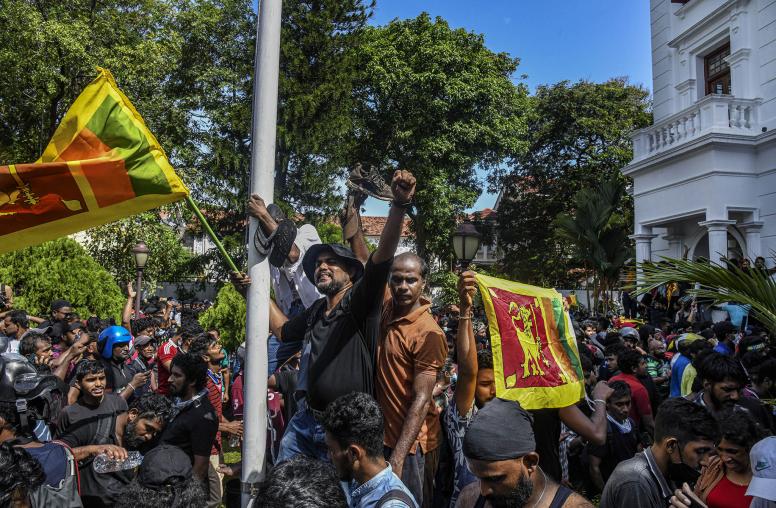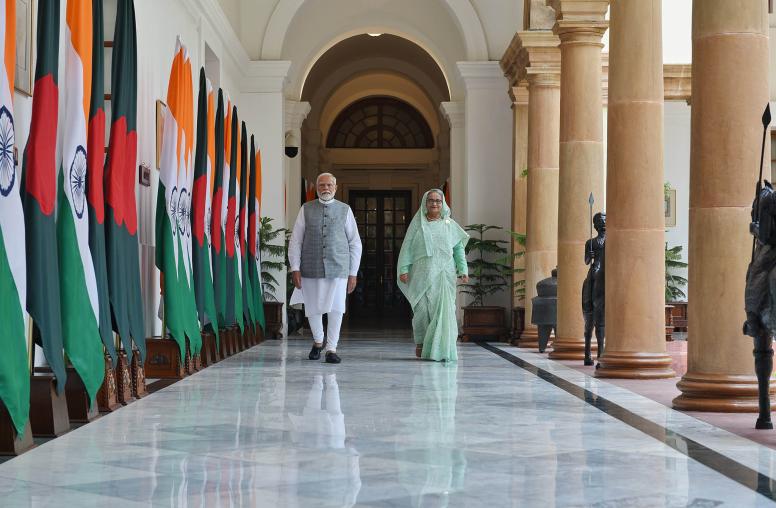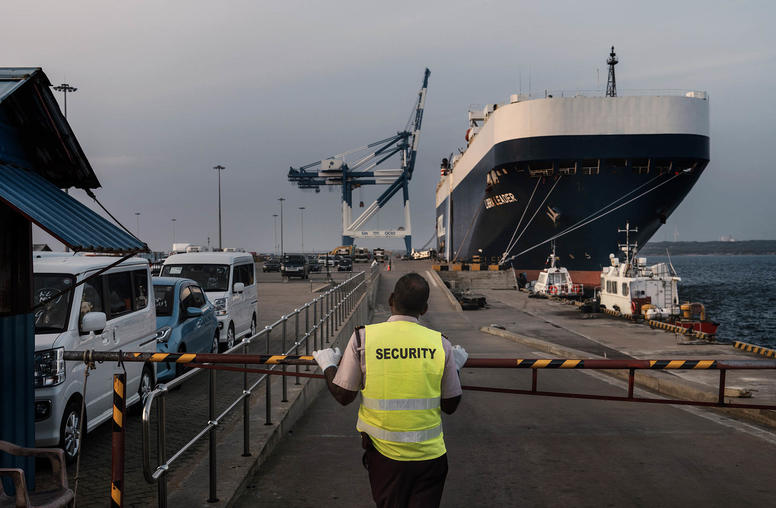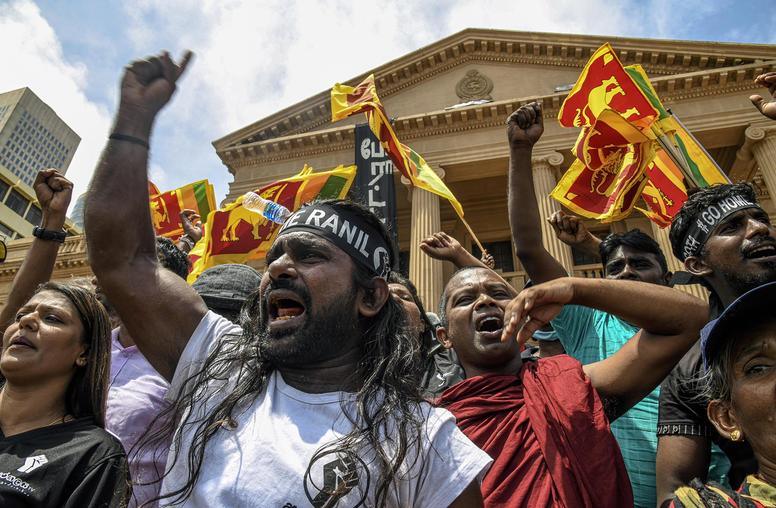Five Things to Know about Sri Lanka’s Crisis
Sri Lanka’s collapse should be a wake-up call to other countries, highlighting the perils of sovereign debt in an era of geopolitical competition.
Following months of escalating protests, and the May resignation of his brother Prime Minister Mahinda Rajapaksa, Sri Lankan President Gotabaya Rajapaksa fled the country on July 13. Sri Lanka’s economy has hit rock bottom as it defaulted on international loans and is facing rampant fuel and food shortages, and the government imposed a state of emergency. Gotabaya’s flight from the country leaves the government in further disarray. How did Sri Lanka get here and what does this political and economic crisis mean for the country and the region?
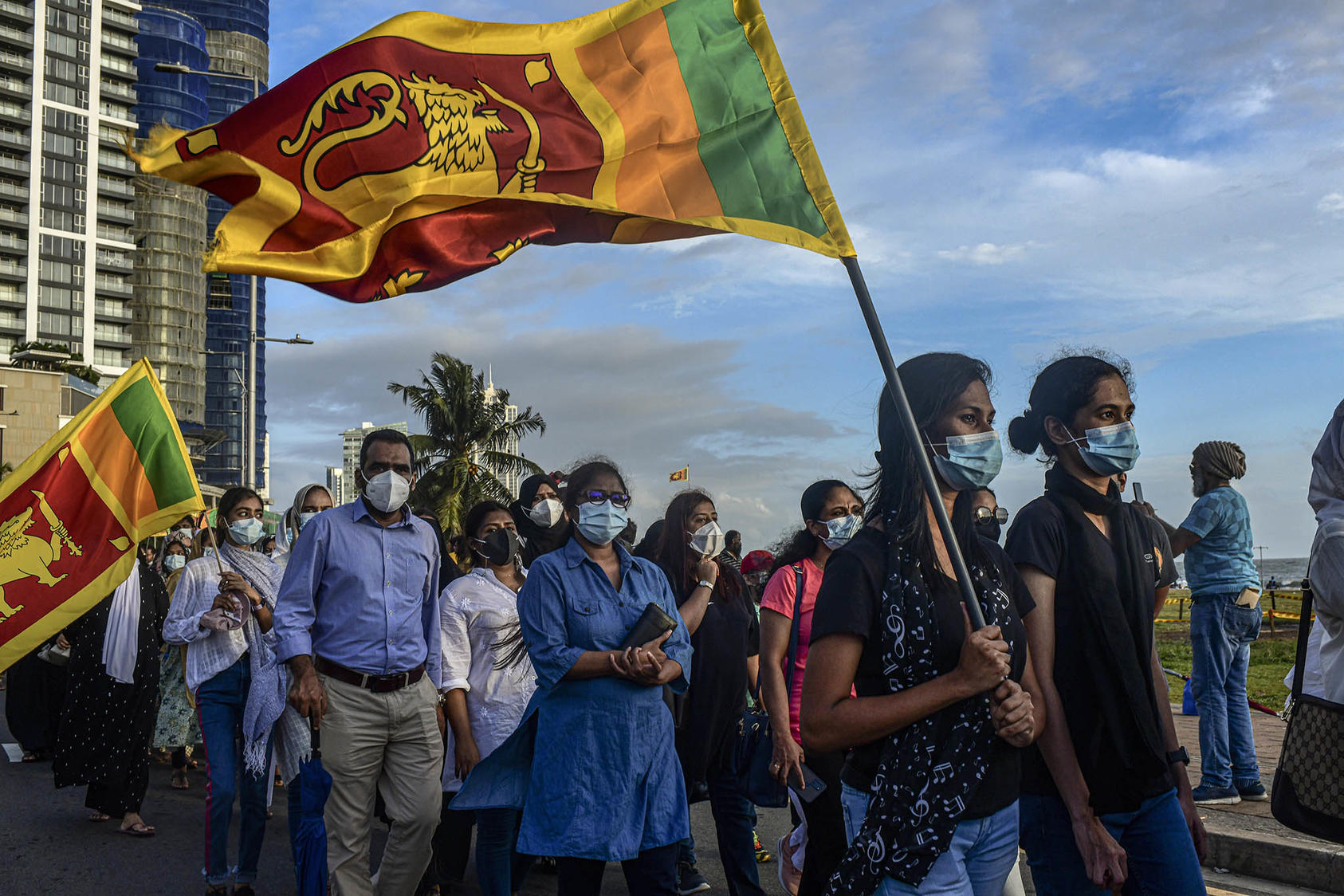
Here are five things you should know about the crisis in Sri Lanka:
1. Sri Lanka is facing the worst economic crisis since its independence in 1948.
The Sri Lankan economy has completely collapsed, as then Prime Minister Wickremesinghe declared a few weeks ago. But this economic meltdown is not a surprise: Years of mismanagement have been exacerbated by several external shocks and the Rajapaksa’s unwillingness to seek help from the International Monetary Fund (IMF) earlier. Everything that could go wrong with the economy has: Sri Lanka faces budget and current account deficits, hyperinflation, a devalued currency and a huge sovereign debt that it can no longer pay.
After the civil war ended in 2009, then President Mahinda Rajapaksa took out massive foreign loans to pay for war expenses and, more importantly, to start flashy infrastructure projects to attract tourism and reward cronies. In a vicious cycle, the government had to turn to foreign lenders, such as the Chinese, to help service already existing debt because they had limited foreign reserves. Rather than focus on economic reforms that might increase those reserves, the Rajapaksas implemented several tax cuts to shore up political support.
The 2019 Easter bombings and the COVID-19 pandemic ravaged tourism, Sri Lanka’s main source of foreign revenue. Adding insult to injury, Gotabaya decided to in 2021 to ban chemical fertilizers to make Sri Lankan farming “all organic” — a move that devasted the tea industry, Sri Lanka’s main export crop. The fertilizer ban (which was finally reversed) and global grain shortages due to the war in Ukraine have made the country more food insecure. The Rajapaksa’s economic plan turned out to be a series of missteps and false bravado that led to the collapse of a once vibrant and economically promising South Asian nation.
Whoever takes control of the government, they will have to work out an IMF program as soon as possible and negotiate to restructure loans held by China, India, Japan and commercial lenders. Without a government in power, IMF loans will take longer to finalize, leaving Sri Lankans in dire need of food and fuel aid because they have no foreign reserves to purchase these items.
2. Sri Lankans have taken to the street in record numbers to protest economic hardships.
In the face of severe economic hardships marked by power blackouts, shortages of fuel, cooking oil and food, protesters have been demanding the resignation of the Rajapaksa-led government since March 2022. Tens of thousands of Sri Lankans have taken to the streets of Colombo, and while that included some opposition politicians, most protesters are average Sri Lankans from all ethnic backgrounds. While concentrated in Colombo, there have been small protests in solidarity across Sri Lanka as almost all citizens are facing serious challenges.
The protesters do not have centralized leadership, but several socialist student groups have been key organizers, particularly on the iconic Galle Face Green in the capital city of Colombo. Gotabaya’s regime has responded in heavy-handed ways, declaring states of emergency and curfews, pushing police and the military to arrest civilians, at times roughing up the protesters, and limiting social media access. While largely peaceful, sporadic violence has broken out, notably the burning of the prime minister's residence and the occupation of the ceremonial presidential palace. After Gotabaya’s departure from Sri Lanka, protests continued against Wickremensinghe when he became acting president. Several protesters were injured in the aftermath of military and police action against them.
The sustained protests mark a remarkable movement of common people who ultimately pushed Gotabaya and his regime to resign. Their main demands included the immediate resignation of both President Rajapaksa and Prime Minister Wickremesinghe, dissolution of the current government and the establishment of an interim government that holds new elections within a year, and a referendum to establish a new constitution that endorses the people’s sovereignty and reduces the president’s executive powers.
3. The Rajapaksa government collapsed and left the country in political disarray.
The roots of the current political crisis are directly tied to the actions of former President Gotabaya Rajapaksa and his family, including his brothers former Prime Minister Mahinda Rajapaksa and former Finance Minister Basil Rajapaksa. Gotabaya came to power in 2019, and in 2020 his party, the Sri Lanka People's Front (SLPP), was able to consolidate its supermajority in parliament on a banner of populism and Sinhalese nationalism. By passing the 20th amendment to the constitution, Gotabaya was able to consolidate an unprecedented amount of power in the executive presidency. His dictatorial tendencies were matched by nepotism, corruption, the elevation of retired military officers into almost every sector of government, and serious accusations of human rights violations during the Sri Lankan civil war. But in the end, it was his (and his family’s) terrible governance and mismanagement of Sri Lanka’s economy, especially during the pandemic, that led to the economic crisis in the fall of 2021.
Even after his brother’s resignation as prime minister in early May, Gotabaya had remained defiant and pledged to serve out the remaining two years of his presidential term. In May, Gotabaya appointed Wickremensinghe as prime minister (his sixth time in the job) as a meager conciliatory move. Given that Wickremensinghe’s Union National Party had only one seat in parliament and he was serving on an appointed national list seat rather than elected one, this move did little to gain popular support nor did it help stem the debt default or hyperinflation. Wickremensinghe unsuccessfully attempted to pass a version of the 21st amendment to limit some of the powers of the executive presidency — a move Gotabaya opposed.
By mid-July, the economic crisis was reaching untenable depths and the protesters (though largely peaceful) had burnt down the prime minister’s house and occupied the president palace. As things came to a head, Gotabaya finally promised to resign by July 13 (a particularly auspicious day in the Buddhist calendar). Yet he escaped the country without resigning. Eventually, the speaker of the parliament announced that he had received Gotabaya’s resignation from Singapore and Wikremensinghe was formally sworn in as acting president on July 15.
4. Sri Lanka’s political and economic future is uncertain, but there are significant problems to tackle for whoever takes charge.
Wickremesinghe has asked parliament to undertake the constitutional process to elect a new president. Parliament will convene on July 16 and begin the process to elect a new president from among their ranks, with the election likely on July 20. Following negotiations with all political parties, it is likely that a compromise candidate will take up the presidency (possibly opposition leader Sajith Premadasa or even Wickremesinghe). An all-party coalition government will try to lead Sri Lanka through IMF negotiations to finalize economic relief and set the stage for fresh general elections.
None of the current parliamentary leaders, most notably Wickremesinghe, enjoy much popular support, and protesters have opposed an all-party government because the Rajapaksa’s SLPP would still have a majority. Instead, they are calling for an interim government to prepare for elections. The most pressing priorities for the next government, in addition to the economic and humanitarian woes, will be finding a peaceful way to resolve the ongoing protests and unrest, seeking some political buy-in from the country’s polarized ethnic communities, and likely amending the constitution to undo the executive presidency.
5. Sri Lanka’s economic and political collapse sends a wake-up call to other countries and highlights the perils of sovereign debt in an era of geopolitical competition.
Sri Lanka’s sovereign debt is held by many countries, most notably China, India and Japan. China holds about 10% of Sri Lanka’s debt, and this has often been used as an example of “debt trap diplomacy.” The reality is more complicated — China indeed has not been willing to forgive any of Sri Lanka’s debt during this crisis and the structure of its bilateral debt comes with opaque restrictions and little relief. Additionally, if you count the debt held by Chinese banks, such as EXIM Bank of China and the China Development Bank, the percentage of Chinese-held debt is closer to 26%.
But by far the largest portion of Sri Lanka’s debt is held by commercial institutions, per official government statistics. Over the last 20 years as Sri Lanka’s debt has gone from low interest rate concessionary lending from the World Bank or the Asian Development Bank to mostly commercial loans held by private banks at much higher interest rates. In 2019, 56% of Sri Lanka’s debt was held by commercial lenders, compared to only 2.5% in 2004. Much of this debt was used for large infrastructure projects that did not yield the returns to justify the loans.
This high level of foreign debt undergirds the crisis, and in a post-pandemic world is a wakeup call for several similarly placed countries in Asia and Africa. On the same day that Gotabaya fled Colombo, Pakistan, which is experiencing similar challenges, reached the final stages of an IMF deal that will hopefully pull it back from the brink.
Sri Lanka has been an arena for competition for India and China (and to some extent Japan), all of whom have historic relations with the island nation. The Rajapaksa regime claimed close relations with China, but ultimately India was most helpful in the crisis. This year, India has sent over $3.8 billion to Sri Lanka, in the form of currency swaps, loans, food and fuel aid. Even before this week’s acute political disarray, India had pledged a comprehensive plan to increase economic and infrastructure ties between the two nations, a move seen as reassertion of its historic influence in Sri Lanka and as a counter to growing Chinese influence. Other members of the QUAD alliance (the United States, Australia and Japan) have also announced various levels of support for the Sri Lankan economy.
Last month at the G-7 Summit, President Biden announced $20 million of additional humanitarian assistance for Sri Lanka, bringing the total U.S. commitments in 2022 for economic and humanitarian assistance to $32 million. It is likely that the United States and other QUAD allies will increase their relief packages for Sri Lankans.
